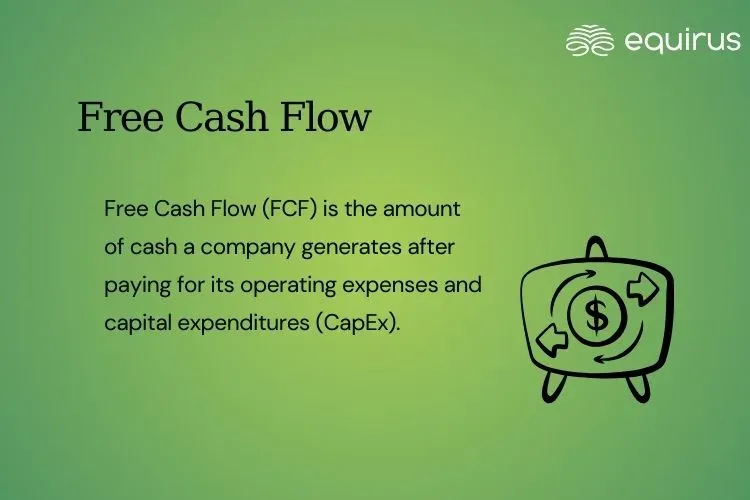Free Cash Flow

Key Highlights
-
Free Cash Flow (FCF) is the amount of cash a company generates after paying for its operating expenses and capital expenditures (CapEx).
-
FCF = Operating Cash Flow – Capital Expenditures.
What is Free Cash Flow?
Free Cash Flow (FCF) is the amount of cash a company generates after paying for its operating expenses and capital expenditures (CapEx). It represents the cash that’s available to the company for:
- Paying dividends
- Repaying debt
- Reinvesting in the business
- Acquiring other companies
- Holding as reserves
In simple terms, FCF tells you how much real cash a company has left after taking care of its basic needs.
Formula
There are a few ways to calculate Free Cash Flow, but the most common formula is:
FCF = Operating Cash Flow – Capital Expenditures
- Operating Cash Flow: Cash generated from core business operations (from the cash flow statement)
- Capital Expenditures (CapEx): Money spent on assets like equipment, machinery, or property
Example
Suppose a company has:
- Operating Cash Flow: ₹1,000 crore
- Capital Expenditure: ₹300 crore
Then,
Free Cash Flow = ₹1,000 crore – ₹300 crore = ₹700 crore
This means the company has ₹700 crore left after covering basic operating and capital expenses.
Why Free Cash Flow is Important?
-
Indicator of Financial Health
High or growing FCF often signals that a company is well-managed and profitable. -
Flexibility
Companies with strong FCF can invest in new projects, return money to shareholders, or weather tough economic periods. -
Used in Valuation
Investors and analysts use FCF in financial models like Discounted Cash Flow (DCF) to estimate a company’s value.
When Low FCF Isn’t Bad
Sometimes, a low or negative FCF may not be bad if:
- The company is investing heavily in long-term growth (e.g., new factories or R&D).
- It’s part of a planned business expansion.
- But persistent negative FCF could signal trouble.
